Huerta Exam 2: Sensation
1/99
There's no tags or description
Looks like no tags are added yet.
Name | Mastery | Learn | Test | Matching | Spaced |
|---|
No study sessions yet.
100 Terms
sensation generally refers to:
auditory
gustatory
olfaction
somatosensory (touch)
vestibular (vision, ear, proprioception)
visual
what makes up the verstibular system?
(vision, ear, proprioception)
in this lecture we will mainly focus on:
somatosensory
primary somatosensory behaviors originate from what area of the brain?
the post central gyrus
postcentral gyrus
primary somatosensory cortex
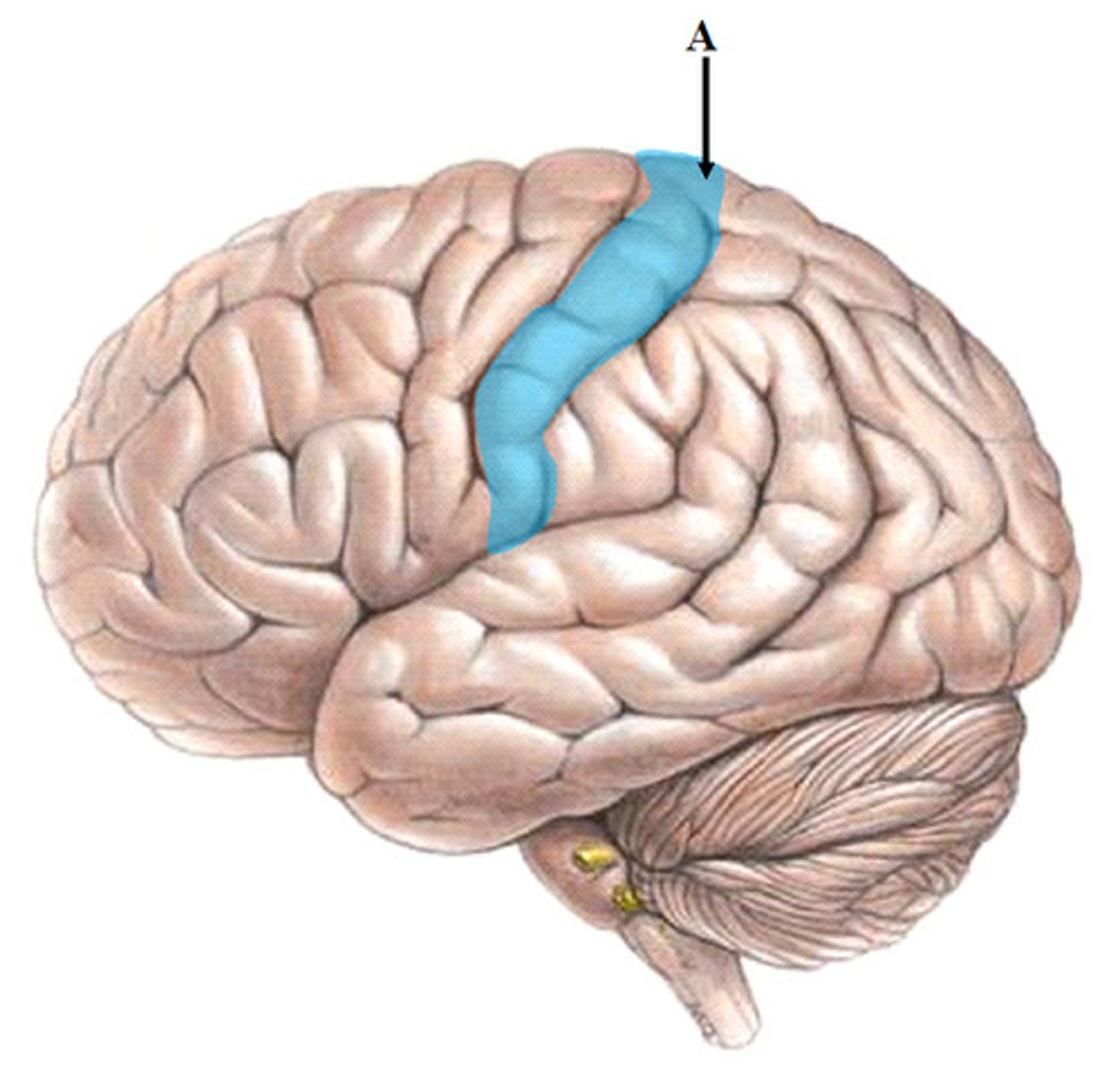
primary motor commands are initiated in what area of the brain?
primary motor region
a maplike representation of regions of the body in the brain
homunculus
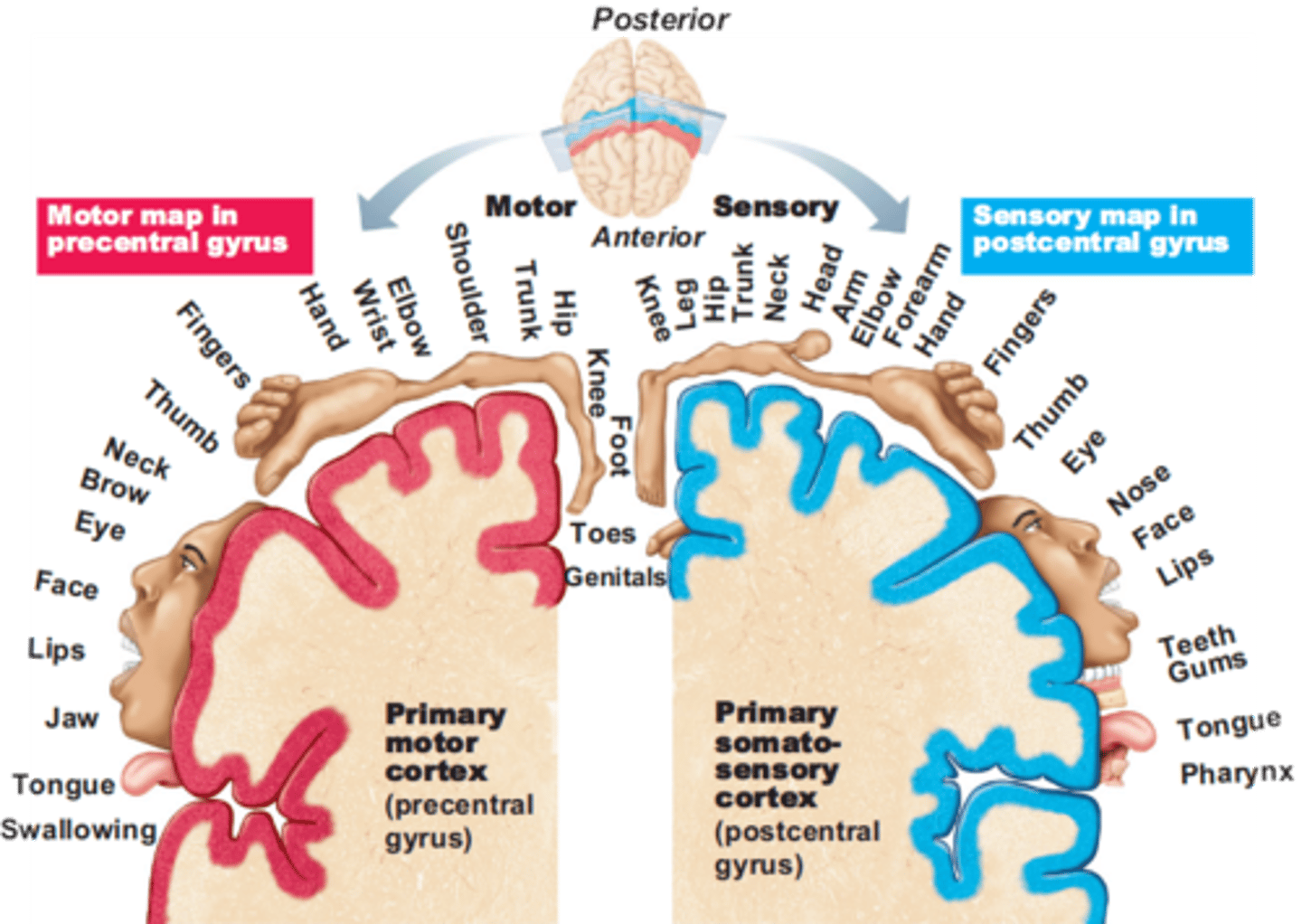
the primary somatosensory cortex is located in the
postcentral gyrus
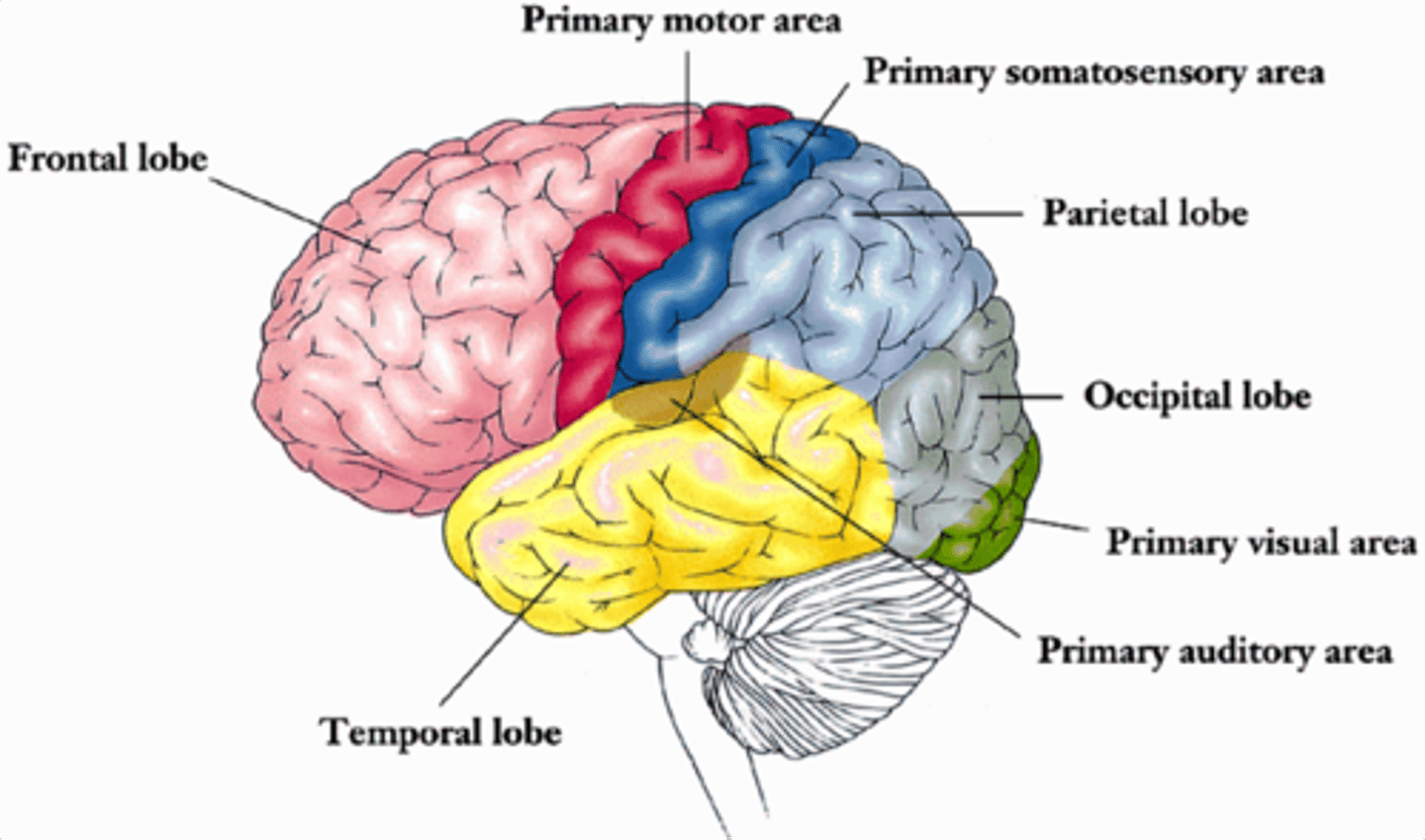
areas of the body that get a lot of sensation
hands
lips
face
hot item of burner journey
1) painful stimulus
2) nociceptors fire
3) impulse is sent to spinal column
4) in column splits
- to muscle (reflex)
- to brain
Nociceptors
sensory receptors that enable the perception of pain in response to potentially harmful stimuli
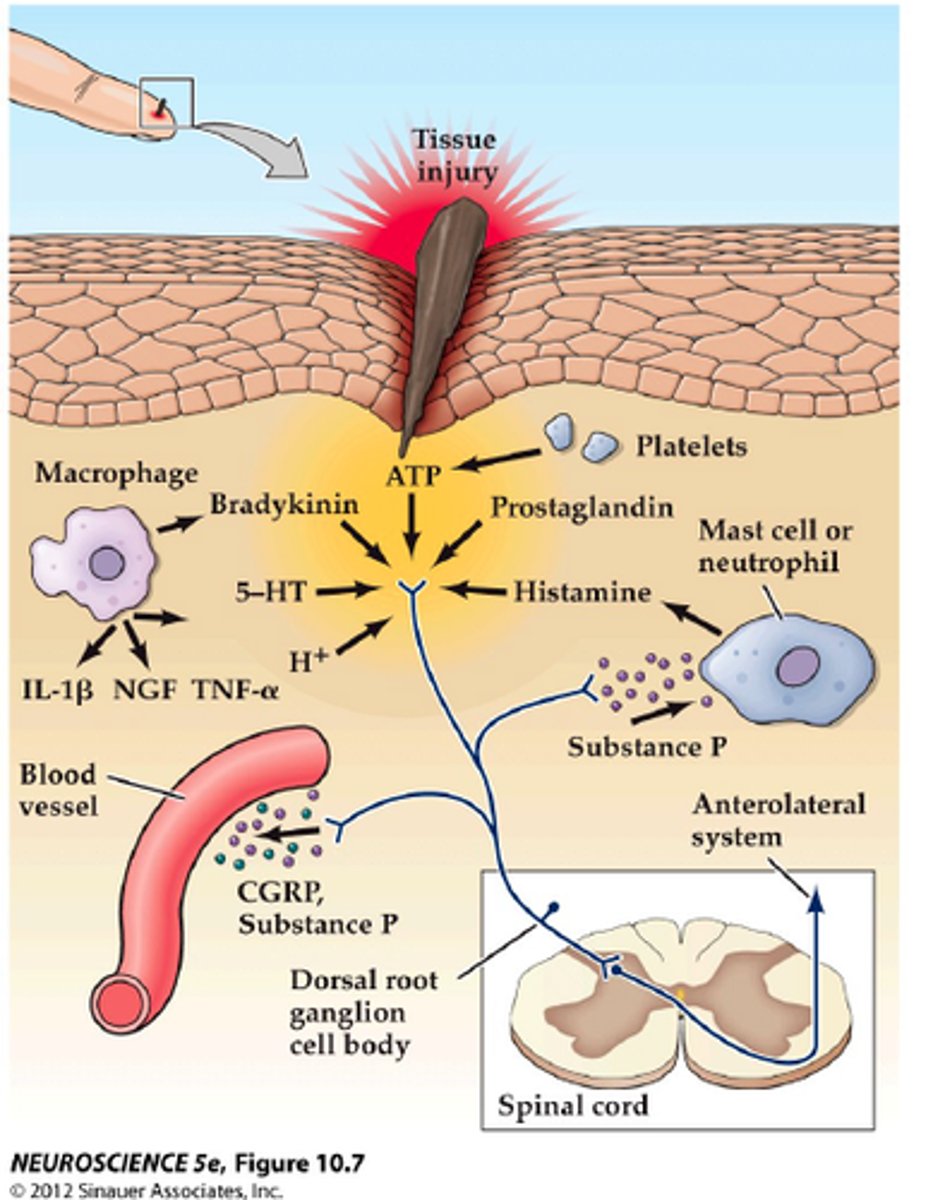
A person with CNS injury with brain involvement, with or without spinal cord injury, is more likely to have deficits in
proprioception and stereognosis.
A person with PNS injury is more likely to have deficits in
touch pressure awareness and two- point discrimination.
potential symptoms of lesions affecting primary somatosensory cortex
MOST IMPACTED
- agraphesthesia
- asterognosis
- hemihypesthesia
- loss of vibration, proprioception, and fine touch
LESS RELEVANT (spinothalamic tract)
- nociception
- thermoception
- crude touch
fine touch
ability too detect when you are lightly touched

pain sensation
nociception
ability to perceive hot, cold, room temp
thermoception
crude touch
gross touch - yes or no
agraphesthesia
inability to recognize symbols, letters or numbers traced on the skin
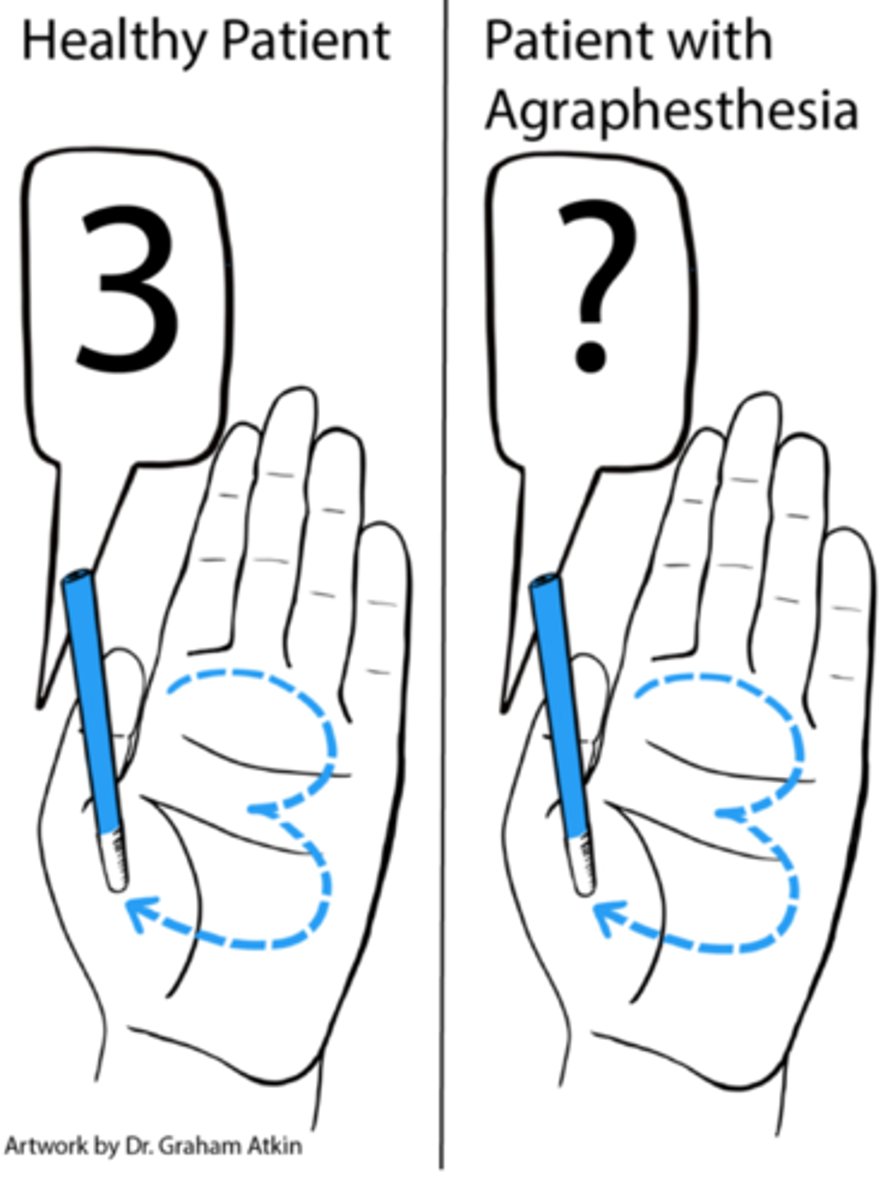
inability to recognize symbols, letters or numbers traced on the skin
agraphesthesia
asterognosis
inability to recognize objects by touch
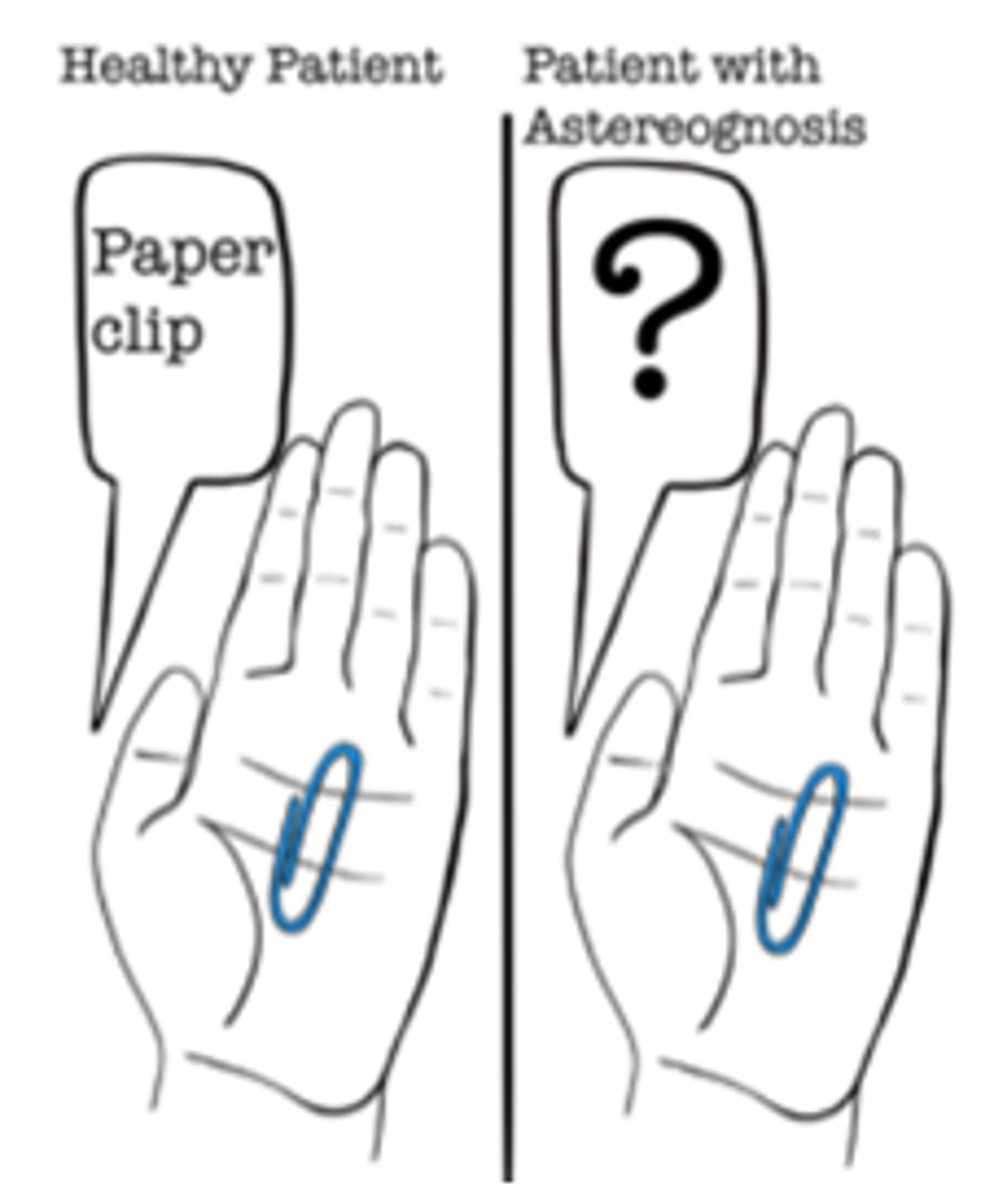
inability to recognize objects by touch
asterognosis
hemihypesthesia
too much sensitivity in one side of the body
too much sensation in one side of the body
hemihypesthesia
proprioception
awareness of your body in space
4 things that contribute to tactile perception:
1) pressure
2) skin stretch
3) vibration
4) temperature
*all these working together contribute to tactile perception
skin stretch gives us information on
how we are manipulating something
- squeezing
OTPF - sensation is a ...
body function
OTPF - sensation is a component of ...
client factors
OTPF - sensation influences both motor and processing aspects of
performance skills
OTPF - sensory dysfunction may affect performance in
areas of occupation
why is sensation so important?
1) required for early learning
2) affects motor performance (depends on the speed of sensation)
3) essential for effective movement (soft fist bump)
requirements for normal sensation
1) reception (somatosensory receptors) - fire
2) transmission (afferent neurons) - send messages
3) interpretation (sensory cortex) - interpret the message
*disruption in any of these challenges performance
provide information about touch, pain, pressure, temperature, and the position of muscles and limbs
somatosensory receptors
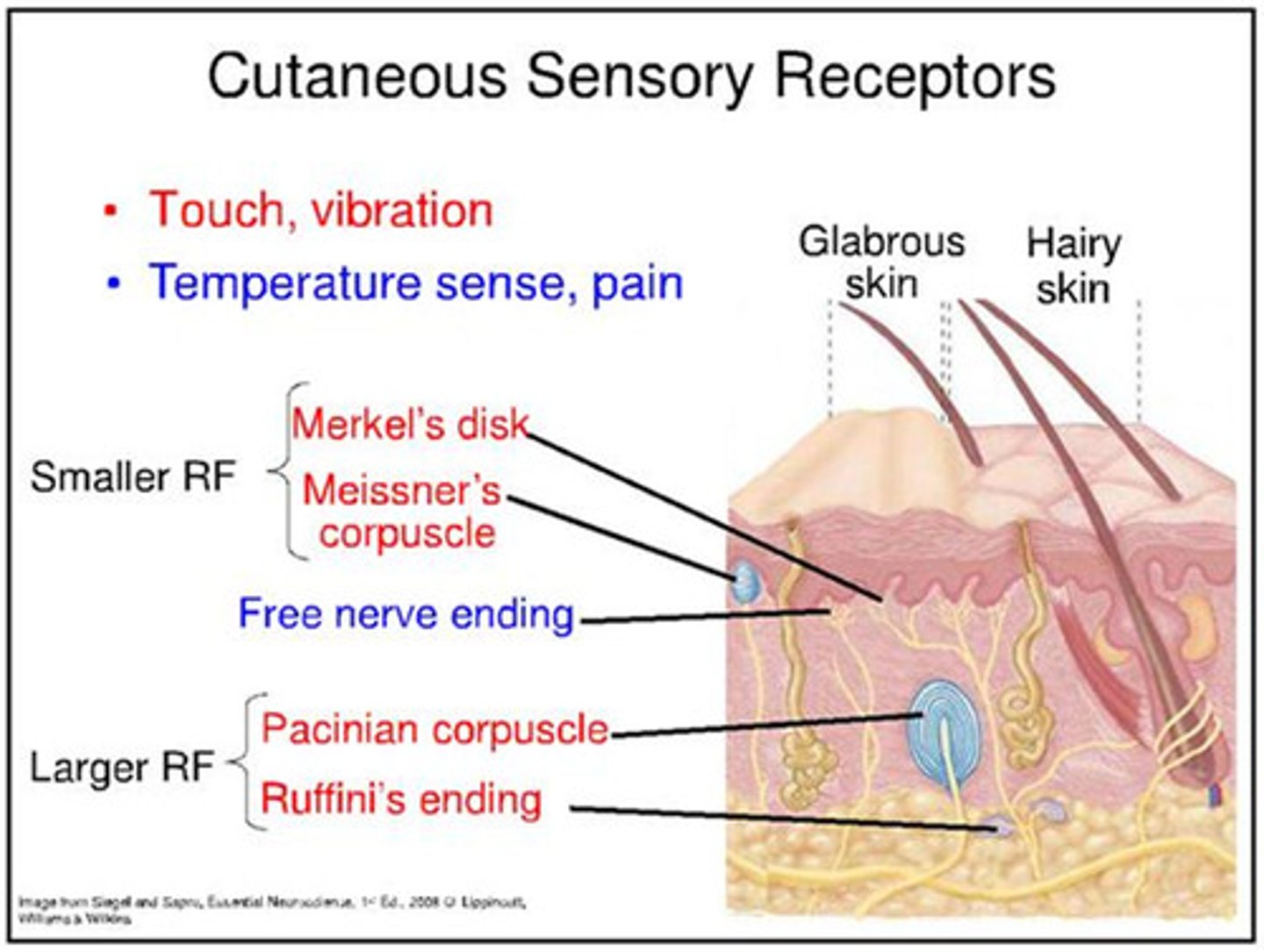
afferent neurons
Nerve cells that carry impulses towards the central nervous system
senses --> brain
efferent neuron
Neuron that conducts impulses away from the CNS to muscles and glands.
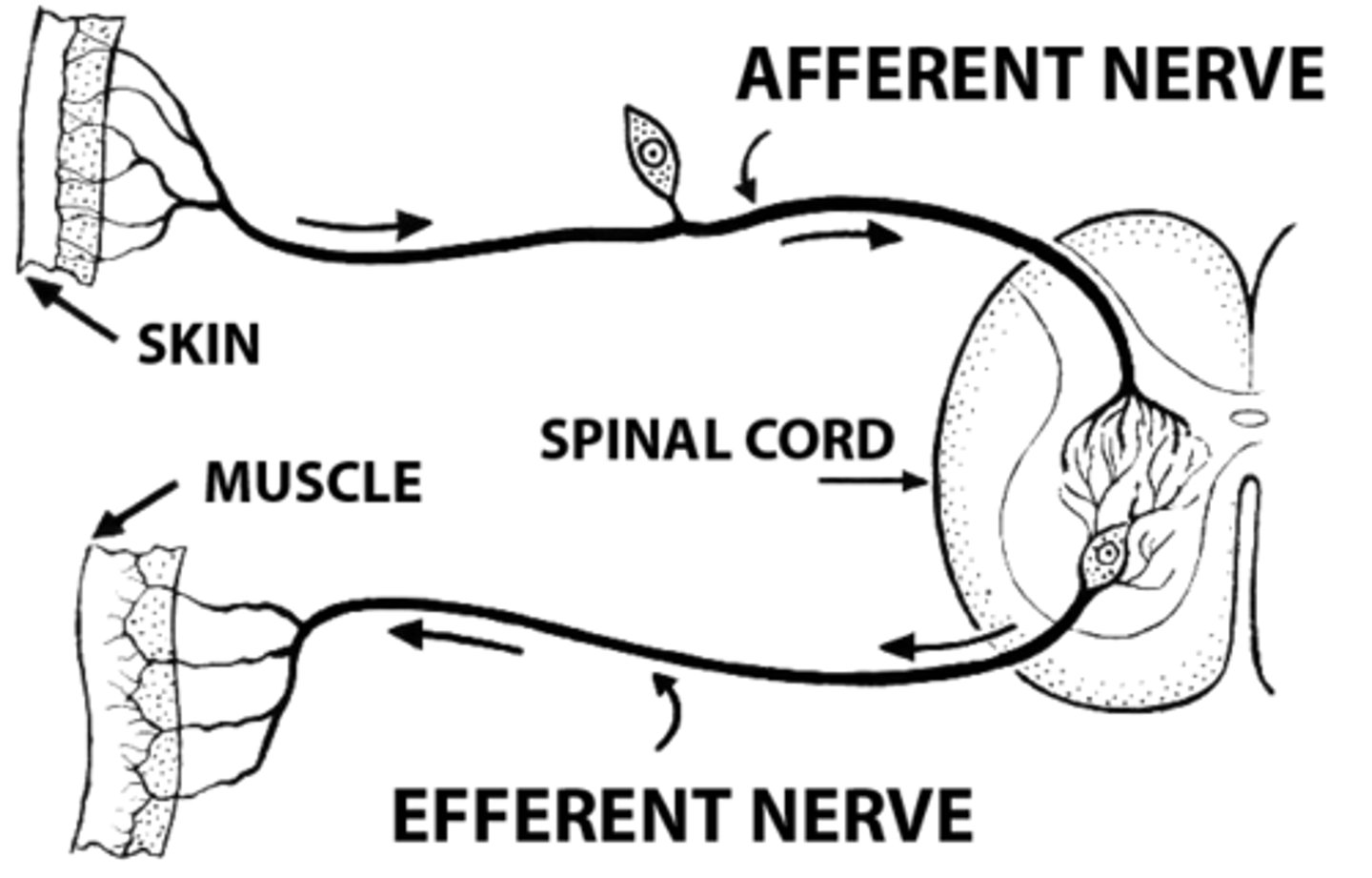
faucet example
1) touch hot water
2) thermoceptors fire
3) sensory organ will transmit to brain
4) loop - instantly take hand out
or
5) brain loop - to upper motor neurons for conscious perception
6) body executes a conscious command - take hand out
upper motor neurons
motor neurons in the central nervous system that control the lower motor neurons in the peripheral nervous system
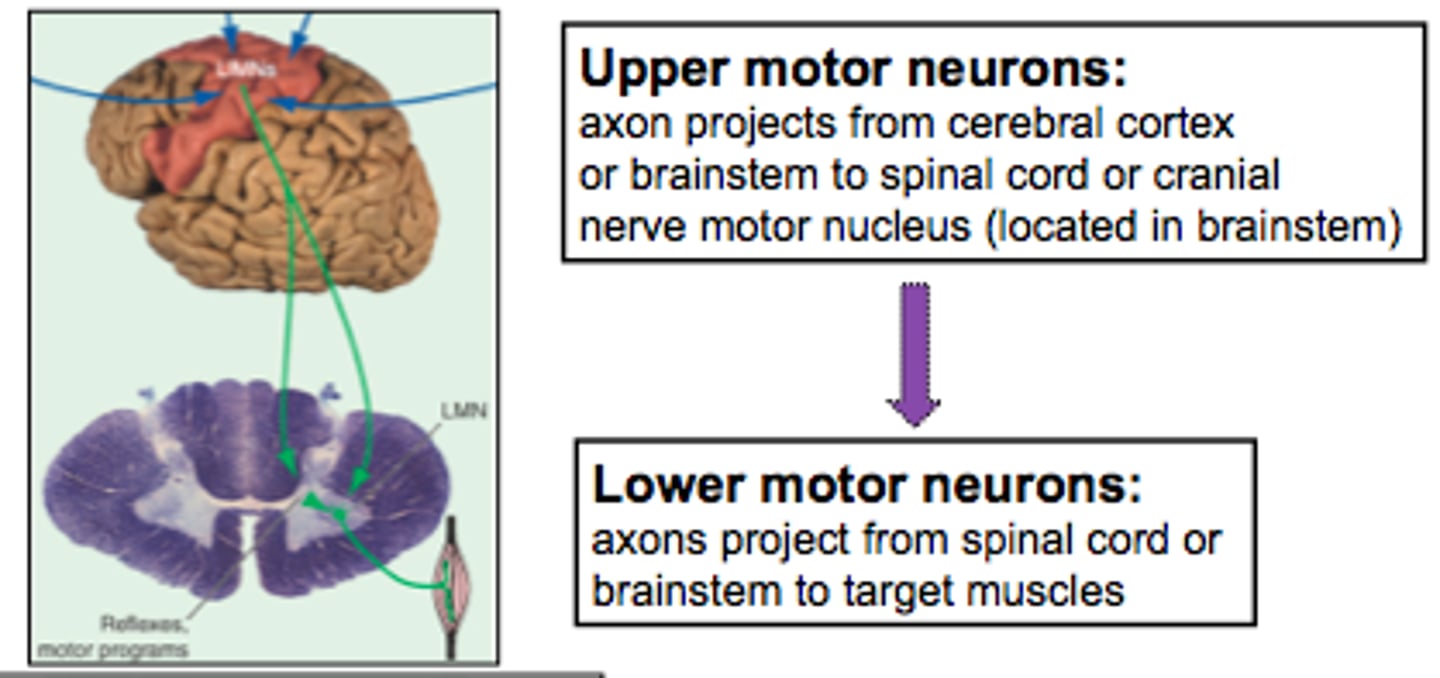
lower motor neurons
axons leave the CNS, extend through PNS to skeletal muscles. Cell bodies in anterior horns of spinal cord and in cranial nerve nuclei of brainstem
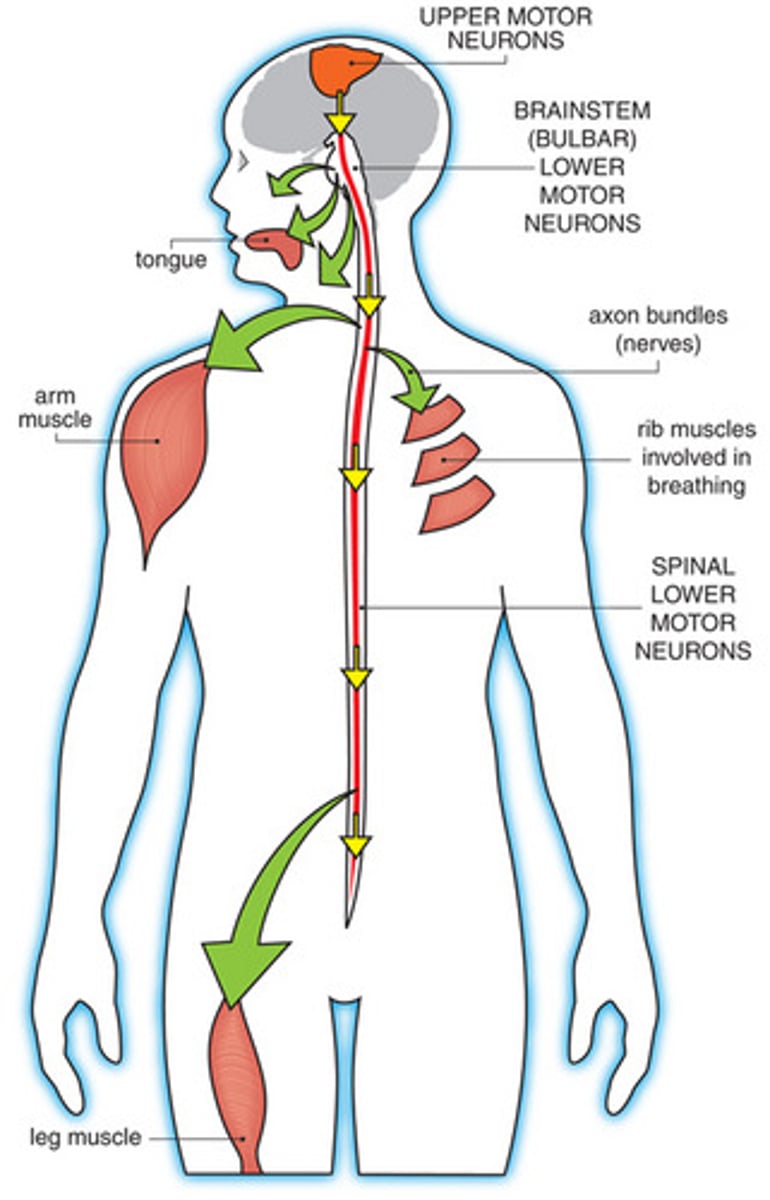
loss of sensation impairs what kind of feedback?
tactile feedback
loss of sensation ... quality of performance
slows/diminishes
what does loss of sensation lead to:
1) impairs tactile feedback
2) slow/diminishes quality of performance
3) increases risk of injury
4) requires adequate vision for compensation
loss of sensation requires ... for compensation
adequate vision
Sensation is stimulated by receptors in the periphery of the body ... and the sensory information then travels through afferent neurons, carrying nerve impulses from the receptors to the brain ...
(PNS),
(CNS)
types of sensory dysfunction
1) paresthesia
2) hyperthesia
3) dysesthesia
4) allodynia
aesthesis
sensation
paresthesia
abnormal tactile sensation often described as creeping, burning, tingling, or numbness
hyperthesia
increased sense of feelings such as pain or touch
abnormal increase in sensitivity to stimuli
hyperthesia
dysthesia
unpleasant, abnormal sense of touch, often experience as pain
unpleasant, abnormal sense of touch, often experience as pain
dysthesia
allodynia
Pain due to a stimulus that does not normally provoke pain
Pain due to a stimulus that does not normally provoke pain
allodynia
when a person with complex regional pain syndrome (CRPS), formerly referred to as reflex sympathetic dystrophy (RSD), experiences pain with the mere movement of air wafting over the involved arm
1) paresthesia
2) hyperthesia
3) dysesthesia
4) allodynia
4) allodynia
Tapping the volar aspect of the wrist may elicit what type of sensory disfunction in the distribution of the median nerve in a person who has carpal tunnel syndrome due to the compressive nature of the disease.
1) paresthesia
2) hyperthesia
3) dysesthesia
4) allodynia
1) paresthesia - tingling, burning, pricking
selection of evaluation tools depend in whether the etiology is due to problems with:
CNS (upper neurons)
- generalized area
- proprioception, stereognosis, temperature
PNS (lower neurons)
- specific area
-pressure, discrimination, pain
generalized area sensory dysfunction
a) CNS
B) PNS
CNS
specific area sensory dysfunction
a) CNS
B) PNS
B) PNS
proprioception, stereognosis, temperature
a) CNS
B) PNS
CNS - happens in the brain
pressure, discrimination, pain
a) CNS
B) PNS
PNS - happens in specific body parts
brain's ability to reorganize neuronal connections
neuroplasticity
neuroplasticity offers implications for treatment regarding:
upper neuron deficits
lower neuron deficits
*no reorganization in the peripheral nervous system
there is no reorganization of neurons
a) PNF
B) CNS
PNS
the potential for recovery depend on:
- etiology (cause)
- severity (minimal vs massive sensory loss)
- location of lesion
- cognition
- motivation
- ability to learn new strategies
we have receptors in the periphery of the body that are stimulated by two types of sources
1) superficial (skin receptors)
2) deep sources (musculoskeletal receptors)
... nerves conduct action potential though the spinal cord to the brain
a) afferent
b) efferent
afferent nerves
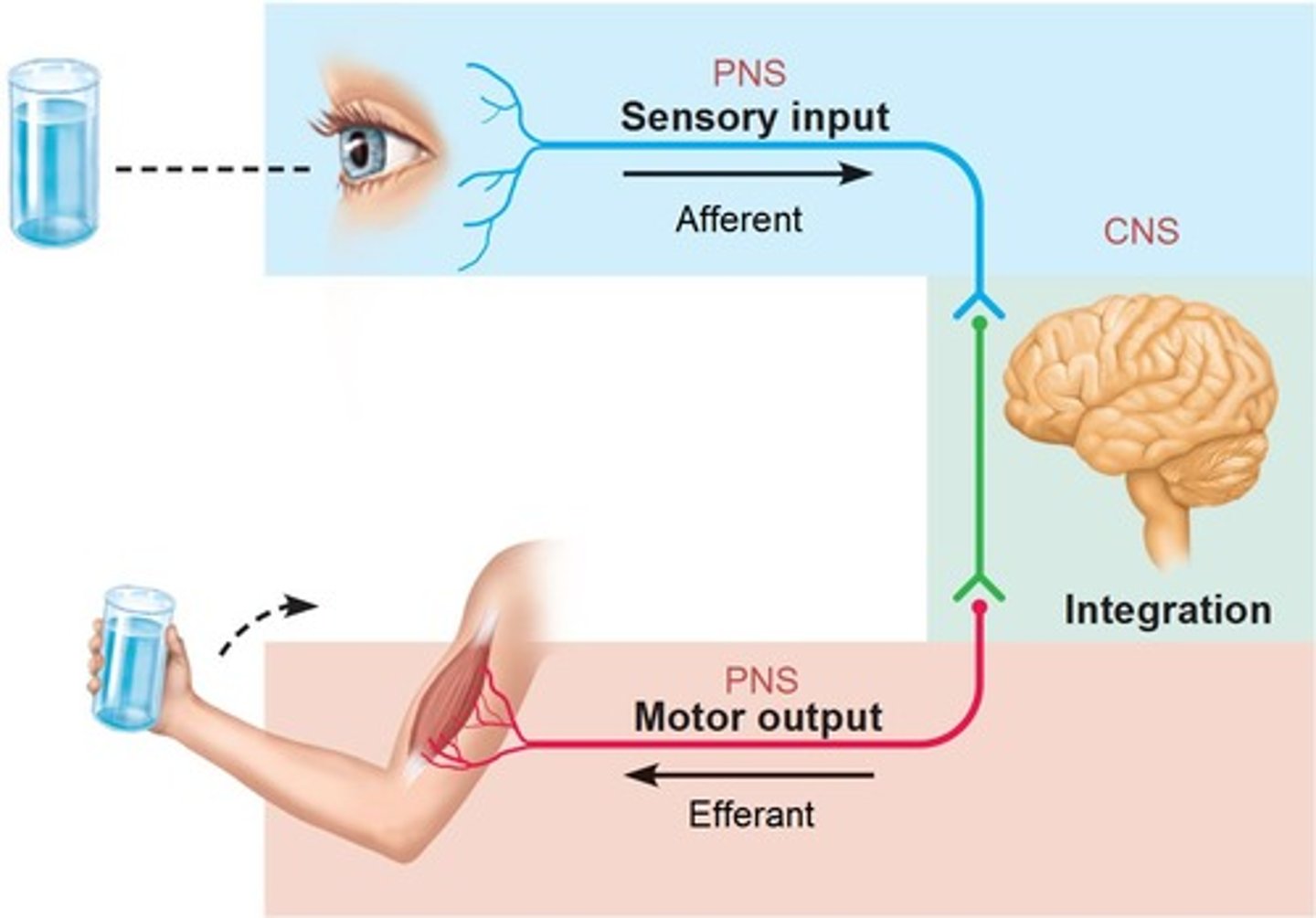
types of somatosensory receptors
1) mechanoreceptors (touch, pressure, stretch)
2) chemoreceptors (cell injury/damage)
3) thermoreceptors (hot/cold)
Each of these three types of receptors has a subset called nociceptors, which sense pain when stimulated
respond to touch, pressure, stretch, and vibration and are stimulated by mechanical deformation
1) mechanoreceptors
2) chemoreceptors
3) thermoreceptors
4) nocireceptors
1) mechanoreceptors
respond to cell injury or damage and are stimulated by substances (neuropeptides) that the injured cells release.
1) mechanoreceptors
2) chemoreceptors
3) thermoreceptors
4) nocireceptors
2) chemoreceptors
respond to the stimulation of heating or cooling
1) mechanoreceptors
2) chemoreceptors
3) thermoreceptors
4) nocireceptors
3) thermoreceptors
Each type of receptor has a subset called ...
nociceptors, which sense pain when stimulated
touch a hostile liquid that causes a burning sensation
1) mechanoreceptors
2) chemoreceptors
3) thermoreceptors
4) nocireceptors
2) chemoreceptors
what are the two types of sensation?
1) primary
2) discriminatory
receives and interprets "simple" sensations
a) Primary sensation
b) discriminatory sensation
a) Primary sensation
receives and interprets more complex, integrated experiences
a) Primary sensation
b) discriminatory sensation
b) discriminatory sensation
primary sensation
receives and interprets "simple" sensations
includes pain, temperature, light touch, pressure, vibration, and proprioception
discriminatory sensation
receives and interprets more complex, integrated experiences
more parts of the brain are involved
- location of touch
- stereognosis, kinesthesia
- 2 pt discrimination
location of touch, stereognosis, kinesthesia, 2 pt
a) Primary sensation
b) discriminatory sensation
b) discriminatory sensation
awareness of touch, pain and temperature
a) Primary sensation
b) discriminatory sensation
a) Primary sensation
yes or no sensation
a) Primary sensation
b) discriminatory sensation
a) Primary sensation
what comes first:
a) Primary sensation
b) discriminatory sensation
a) Primary sensation
localization of touch
Identify the exact site where the skin has been stimulated
Kinesthesia
the system for sensing the position and movement of individual body parts
feeling of movement
neuropathy
dysfunction of the PERIPHERAL nervous system
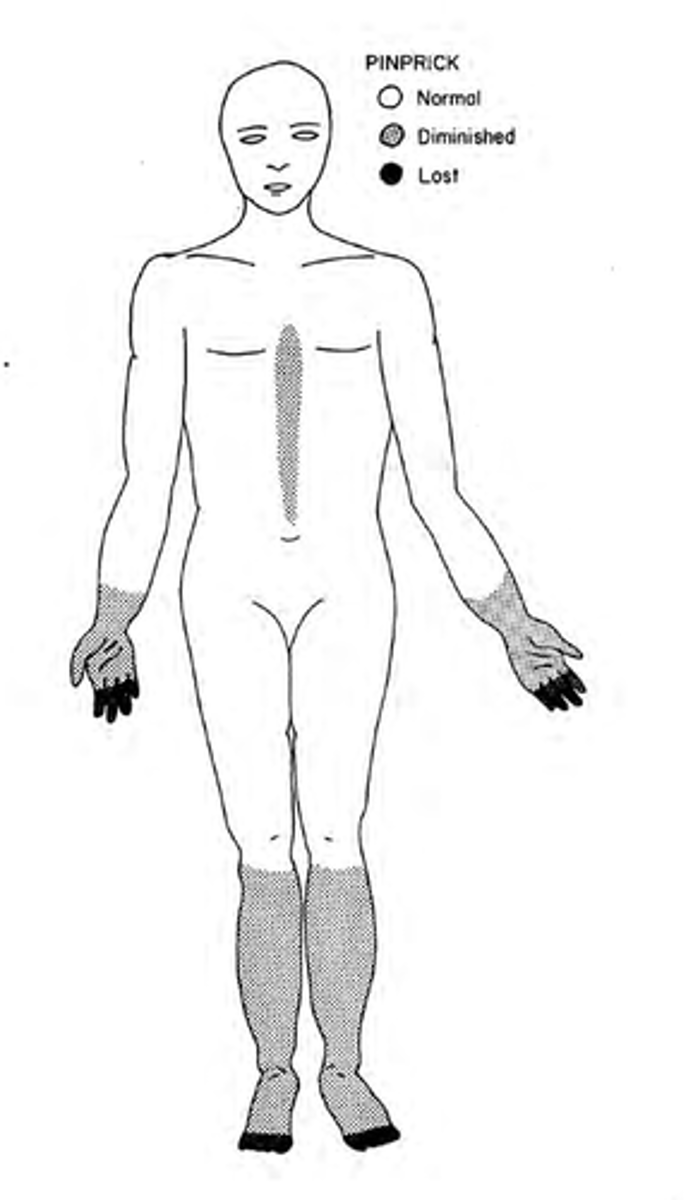
dysfunction of the peripheral nervous system
neuropathy
neuropathy sequence of loss
1) discriminative touch and proprioception (silk vs yarn)
2) cold
3) heat
4) pain
causes more damage
a) heat
b) cold
heat
neuropathy sequence of return
1) pain
2) heat
3) cold
4) discriminative touch and proprioception
it is vital that pain returns first because of
safety
nerve sheath loss
slower transmission
loose some of the impulses along the way (weaker message)
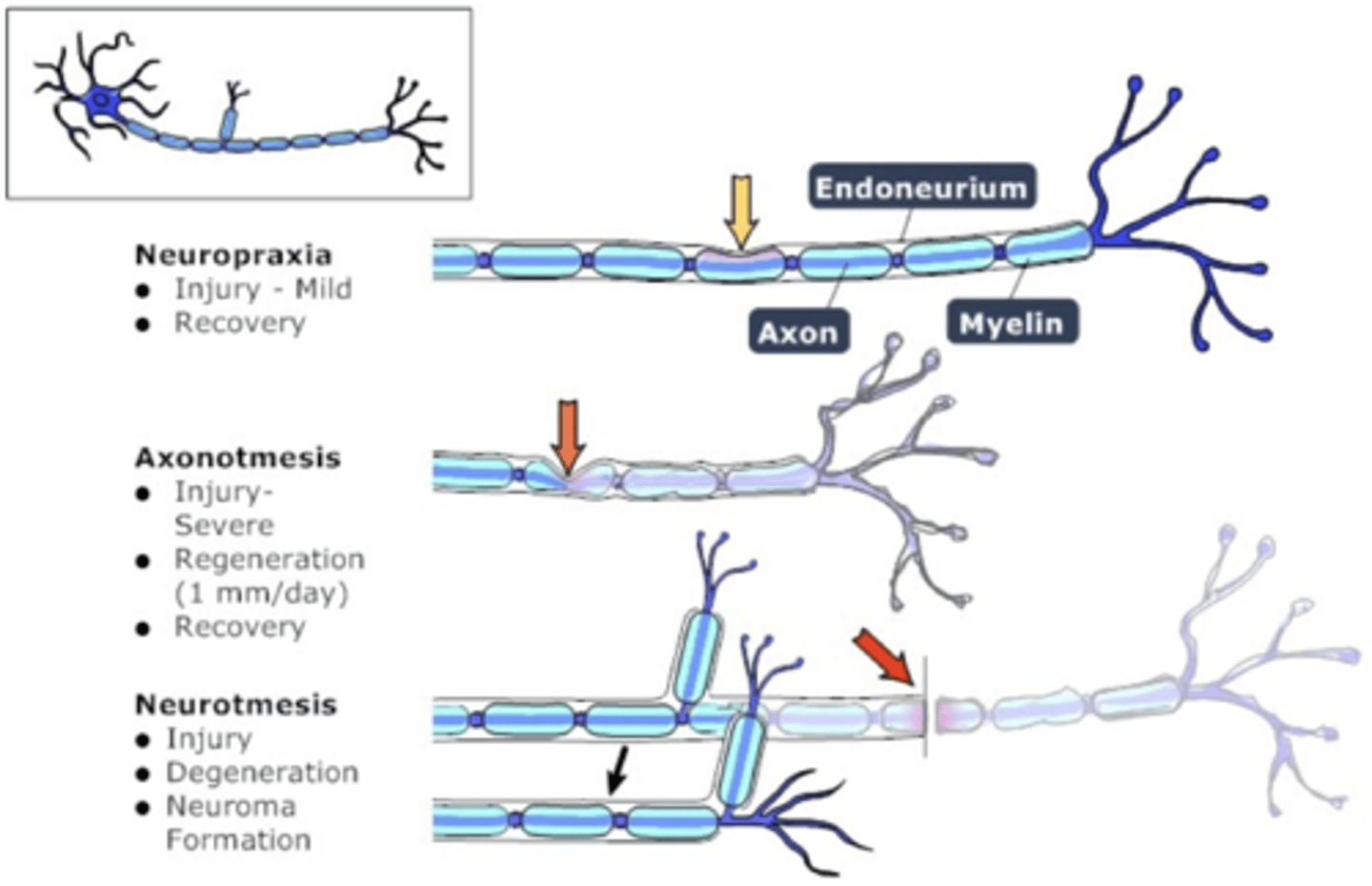
nerve disconnection
nothing gets transmitted
info does not get to the brain and vice versa
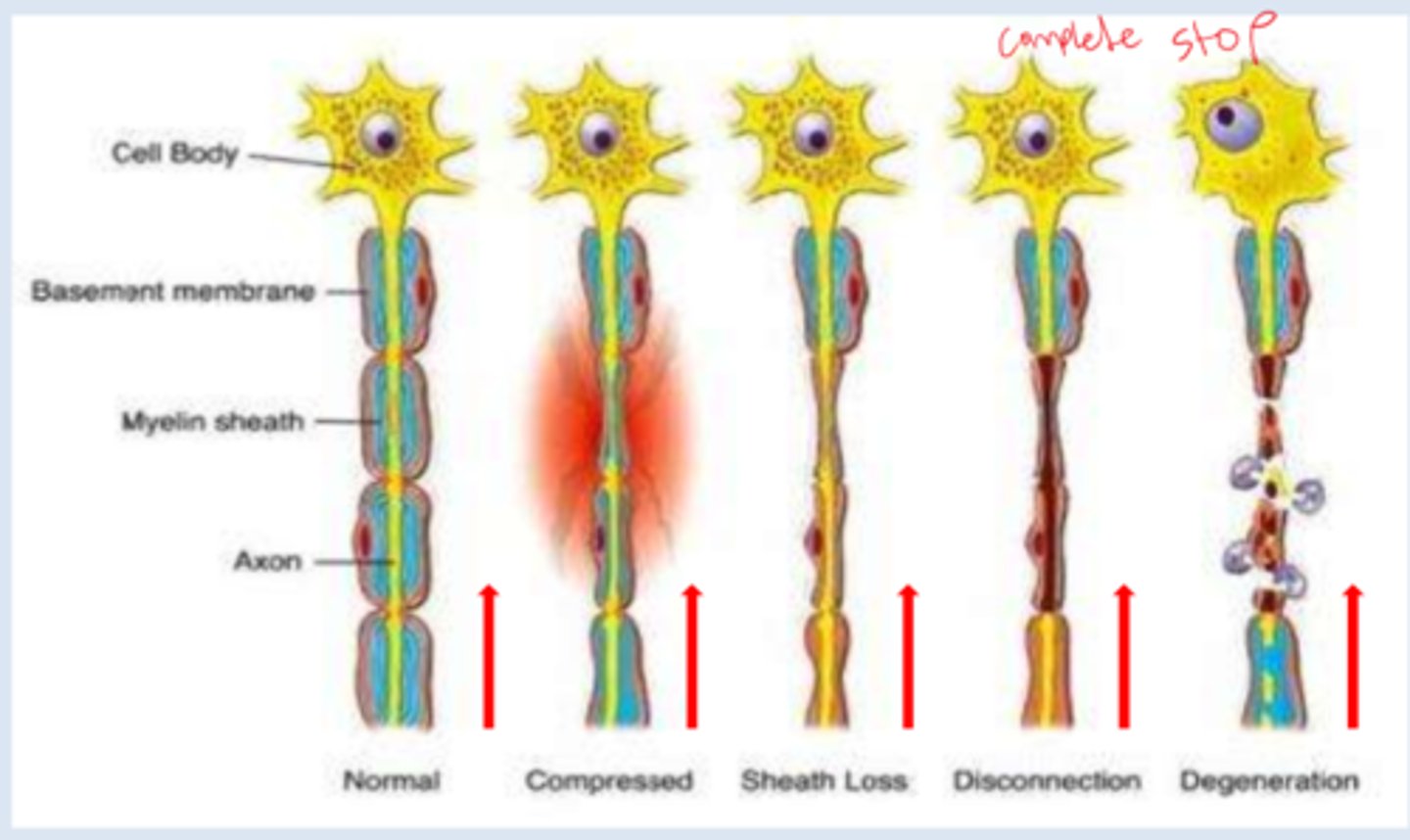
nerve degeneration
whole system breaks apart
conduction speed
bad receiving
weak signal
superficial sensation
touch
cutaneous sensation
--- part of our body have higher density receptors and smaller receptor fields
a) proximal
b) distal
distal
- enhanced fingertip sensation
test that enables us to tell the difference between a penny and a dime
2 pt discrimination test
superficial sensation includes:
- touch (am I being touched?)
- temperature (hot vs cold)
- pain (pain vs no pain)
Compared with the more proximal body parts, the distal parts have
a higher density of receptors and smaller receptive fields
most discriminative sensation is in what body part?
fingertips
importance of temperature sensation for the clinic
- Important to test temperature sensation prior to applying thermal modalities
- Important for an individual to determine safe temperature for washing hands/bathing
- Safety during meal preparation
- Compensatory strategies may be priority
Important to test temperature sensation prior to
applying thermal modalities